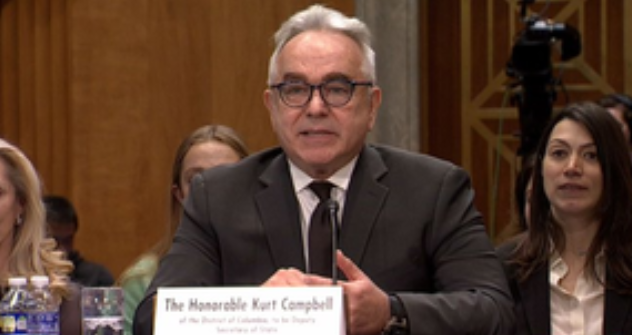Technology
India-US ties achieve 'escape velocity', says top US official

Washington, June 25
A top US official said on Monday that progress in the bilateral relationship with India has finally achieved "escape velocity", using a term from space exploration to describe the velocity required by a body to soar without the pull of gravity.
Deputy Secretary of State Kurt Campbell was speaking on a sustainable and enduring US policy in the Indo-Pacific region at an event at the Council on Foreign Relations, a leading think tank.
He was recently in India along with National Security Adviser Jake Sullivan for a much-anticipated visit that also turned out to be the first trip by senior US officials to New Delhi in Prime Minister Narendra Modi’s third term.
Campbell also made a strong pitch for according to a higher preference to increasing the intake of Indian students in STEM fields in US universities, than to students from China, who are not trusted in high-technology fields.
"The United States and India have launched an effort to intensify defence industrial cooperation on jet engines and armoured vehicles," Campbell said about ties with India in the context of America's sustained engagement with the Indo-Pacific region.
"After working in India for decades, I can tell you that it is my view that finally, the use-end rate relationship has reached escape velocity. I think we have a partnership that can be sustained and there is ambition in both Delhi and Washington to take important next steps. We've worked together on a variety of other issues between the United States and India including announcing new initiatives where we will work together for the first time in the Indian Ocean."
Campbell was previously the White House czar for President Joe Biden’s Indo-Pacific policy, which has seen this administration elevate the Quad platform with India, Australia, and Japan to the level leaders, the launch of the Australia, UK and US partnership called AUKUS and deepening bilateral, trilateral and multilateral ties with Indo-Pacific countries with the shared goal of managing China’s aggressive rise.
The jet engine cooperation that Campbell mentioned is the joint production of GE’s F414 jet engine with HAL that was announced during Prime Minister Modi’s state visit in June last year.
India and the US are also in talks to co-produce Stryker armoured infantry fighting vehicles (IFVs or infantry combat vehicles). India is looking to this vehicle as a replacement for its fleet of ageing Russian-made ICVs.
India and the United States cooperate on a wide suite of issues and people-to-people is one of the most important of them. Indian students in US universities are a key part of it. Indians account for the second largest cohort of foreign students and their numbers are growing rapidly.
Campbell's strong pitch for a larger intake of Indian students came in response to a question on what needs to be done to shore up declining numbers of Chinese students. "Right now the largest increase that we need to see going forward would be much larger numbers of Indian students that come to study in American universities on a range of technology and other fields more directly," he said.



































